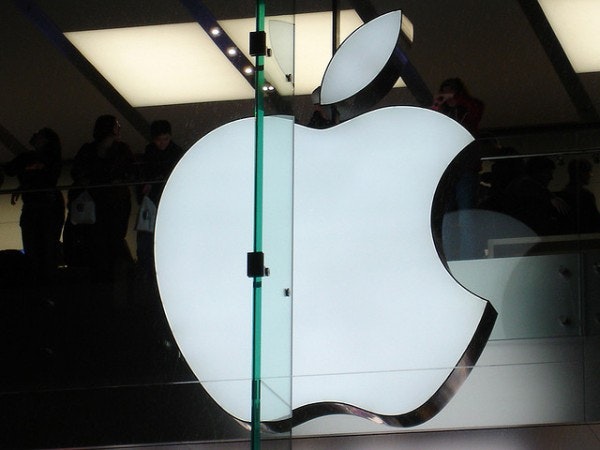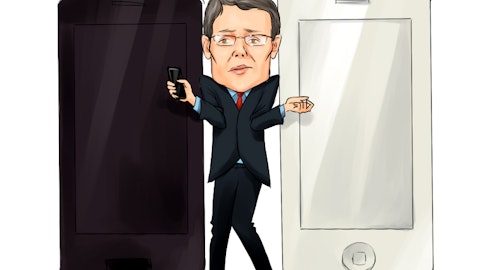There are basically two types of investors: long term and short term. Long term investors look at what a company can do over the next ten years or more years while short term investors “play the market.” They face the odds on what will happen tomorrow (or in the next few months). I lean toward the buy and hold approach, and will now look at a few companies that seem to present great long term opportunities.

Short term…
Before I get into why I believe these companies will perform well over the next decade or so, lets look back as to how they have done over certain periods of time. Year-to-date (YTD) Apple Inc. (NASDAQ:AAPL), Amazon.com, Inc. (NASDAQ:AMZN), Whole Foods Market, Inc. (NASDAQ:WFM) and eBay Inc (NASDAQ:EBAY) have performed pretty poorly considering how the market in general has performed.
Mid term performance…
Despite these companies’ YTD performance, they have all performed very well over the past five years. Apple, Amazon, Whole Foods, and eBay have increased their revenues by 482%, 319%, 147%, and 165% respectively. Two of these five companies have at least tripled their revenues in a five year period!
Not only have revenues increased this much, but earnings per share have also increased (except for Amazon) by at least 46% each. Again, besides Amazon.com, Inc. (NASDAQ:AMZN), every one of these companies has increased free cash flow (FCF) by at least 11%. While 11% is not overly impressive, consider that Apple Inc. (NASDAQ:AAPL) increased their FCF by 494% while Whole Foods went from $ -198 million to $725 million. Let’s look at their stocks to see how they performed.
Long term production…
So, as you can see, their five year performances put their YTD performances to shame. Let’s see about the ten year performance. In the past ten years, eBay’s earnings per share have increased seven, Whole foods eight, Amazon five, and Apple ten consecutive years. Looking at the chart below, we see incredible returns for the span of the decade.
In fact, if someone had invested just $10,000 into some of these companies ten years ago, he would not be reading this article. Instead, he would likely be on an island, having a drink, being fed grapes by beautiful people waving palm branches as makeshift air conditioners. If someone invested in Apple Inc. (NASDAQ:AAPL), Amazon.com, Inc. (NASDAQ:AMZN), Whole Foods, or eBay, that one-time, $10,000 investment would currently be worth $607,000, $96,600, $30,720, or $23,260. Hopefully he would have invested in a company more than once, but nonetheless that is a mighty return.
The Future…
So, why do I think these companies will continue to grow? I believe they all have durable competitive advantages. Some more than others, but they all have unbelievable opportunities moving forward. Apple Inc. (NASDAQ:AAPL) has developed a name that everyone knows and the media loves, and they continue to grow. Despite the stock plummeting in recent months, revenues over the past TTM are 5.2% more than 2012’s total, it carries a P/E of 10.3, and it presents a cheap stock (10.8% FCF yield).
Amazon has challenged virtually every retailer in the world with its variety of products sold online from the convenience of your own home. While tax breaks may not be as substantial as they used to be, the company still offers competitive prices with a greater variety than you can find in any brick and mortar store. Although its metrics don’t seem that great, how can you go against a company that is threatening stores ranging from Best Buy Co., Inc. (NYSE:BBY) to Barnes & Noble, Inc. (NYSE:BKS)? They currently have a CEO who, in my humble opinion, is one of the best in the world. Jeff Bezos has been selling a long term vision for ages, and that vision remains true today.
Like Amazon.com, Inc. (NASDAQ:AMZN), eBay has become a place that millions of people shop at from home. Their biggest competitor is Amazon, but they are taking measures that will make them more competitive. In fact, they recently changed/dropped fees for users listing items on their site. Morningstar shows that the industry average P/E is a whopping 57.5 — eBay’s is just 43% of that. The company’s 1, 3, 5, and 10 year total returns have all beaten the S&P 500 by at least 9.1%.
America is becoming more and more conscientious of its obesity problem. People are turning to healthier foods, and more people everyday are going with a natural selection. Whole Foods continues to benefit from this, and I don’t see it slowing down anytime soon. It again beats the industry average for P/E measurements and also holds a FCF yield of 4.6%. It seems fairly priced, has good overall metrics and offers foods that other places, such as Wal-Mart Stores, Inc. (NYSE:WMT), don’t.
The Foolish Bottom Line…
I do not know what type of investor you are, I do not claim to have a crystal ball, and I certainly do not claim to be all-knowledgeable, but it does appear that these companies offer an opportunity that is hard to turn down. For long term investors, those that buy and hold, these companies appear to be very suitable. Please do your own research and find what works for you. These are just observations that I have found interesting, but that doesn’t mean they are right.
The article Long Term Investments With Short Term Loss originally appeared on Fool.com and is written by Reuben Tyler Wofford.
Copyright © 1995 – 2013 The Motley Fool, LLC. All rights reserved. The Motley Fool has a disclosure policy.





